|
My last article was about a virtual visit to Coonawarra, Australia. Since my palate is still savoring the last wine I opened from this region, I’ve decided to stay in Australia longer and introduce you to a few more wines from this majestic and oldest continent. Australia is broken down into six states and two territories. There are 65 wine regions and over 2,500 wineries spread throughout the states. One could spend a long time exploring these regions and wineries! It is interesting to note there are no grapes indigenous to Australia. The first vines arrived in 1788, and vineyards were established in 1805. James Busby, a viticulturist and writer, is regarded as the “father” of the Australian wine industry. He traveled to Europe in 1831 and collected 650 grape varieties, of which 362 survived the journey. They were planted in the Botanical Gardens in Sydney, and a duplicate collection was planted in Busby’s Hunter Valley property. Over time, cuttings made their way to other regions, establishing the “old vines,” of which many can be traced to the original Busby collection. With over 130 grape varieties, the major wines produced in Australia are Shiraz, Cabernet Sauvignon, Pinot Noir, Grenache, Merlot, Chardonnay, Riesling, Semillon, Muscat and Sauvignon Blanc. Today, my focus is on three wines from Victoria and McLaren Vale wine regions. Domaine Tournon, Victoria Domaine Tournon, owned by legendary Michel Chapoutier, is located in the Victoria wine region, which also is a state. Michel made his mark on the wine world by producing beautiful Rhone Valley wines. But he had a desire to find land in Australia and grow Rhone Valley grapes there as well. In 1997, Michel began exploring the terroirs of Australia and settled on the distinctive terroirs of Victoria on the southeastern side of the continent. He and his team planted non-grafted vines from 19th-century clonal selections, imported from Europe before the arrival of phylloxera, in the sub-zones of Heathcote and Pyrenees in Victoria. These vineyards were then and continue to be farmed organically. Mathilda Victoria Shiraz 2020 This wine is 100% Shiraz. Grapes are sourced from the sub-zone Pyrenees vineyards with soil composed of podzolic layers from clay and ferruginous schists. The wine was entirely aged in cement or stainless steel tanks for 12 months and then bottled. Mathilda Shiraz is named after Michel’s daughter, Mathilda. Nose: Beautiful notes of dark fruit, pepper, violet, and earthy. Palate: Aromas segue onto the palate with silky tannins, a sweet and savory dance, and a spicy finish. Alcohol: 14.5% SRP: $21 Pairing suggestions: Charcuterie, game, roasted meats, seared tuna, vegetable stew, and Asian cuisine. Hardys, McLaren Vale, South Australia Hardys is one of the oldest wineries in Australia and is celebrating its 170th anniversary this year. It was founded in 1861 by Thomas Hardy, who recognized the potential of McLaren Vale terroir and the endless possibilities for creating world-class wines. By 1900, Thomas Hardy and Sons had become the largest winemaker in South Australia. Thomas passed away in 1938, leaving his wife, Eileen, and four young children to carry on. Eileen successfully took over the winery’s leadership and is credited with putting McLaren Vale on the world wine map. By 1965, the fourth generation took its place at the helm. In 2018, Hardys was purchased by a private company, the Carlyle Group. Although it is no longer family-owned, a few family members are still associated with the company. Hardys Tintara Reserve Shiraz 2019 The grapes for this 100% Shiraz are sourced from the vineyards of the original Tintara site where Thomas Hardy made his first wines. There is no data available as to vinification or aging methods. Nose: Dark fruit, cherry, anise, and baking spice. Palate: Blackberry, dark plum, mocha, spice, and a touch of blueberry on the finish. Silky tannins and good structure. Alcohol: 14% SRP: $20 Pairing suggestions: Grilled meat, game, or veggies. BBQ, stews, and aged cheese. Hardys Tintara Reserve Cabernet Sauvignon 2019 The grapes for this 100% Cabernet Sauvignon were also sourced from McLaren Vale’s Tintara vineyard. There is no data available as to vinification or aging methods. Nose: Dark berries, cherry, fennel, herbs, and Palate: The savory herbs blend beautifully with the sweet berries. Beautiful texture and length. Spice and cherries linger on the finish. Alcohol: 14% SRP: $20 Pairing suggestions: Charcuterie, Asian cuisine, grilled meat, seared tuna, stews, or spicy Pumpkin Red Lentil Chili! Stay tuned for a deeper dive into the regions/sub-zones of Australia. There is much to discover!
Until next time… Cheers! Penina To leave a comment or if you have an inquiry, please contact me at [email protected] This past week, I had a face-to-face conversation with the iconic Sue Hodder, senior winemaker at Wynns Coonawarra Estate, located in Australia’s southeast Limestone Coast. Sue joined Wynns in 1993. In 1998, she became the winery’s first female chief winemaker. Her enthusiasm, zeal, and delightful humor made for an engaging visit. Let’s start with a brief history of Wynns Coonawarra Estate. The estate’s history began with Scottish pioneer John Riddoch, who founded the estate in 1891, planted vineyards, and built and completed the estate’s famous stone, three-gabled winery in 1896, called Chateau Comaum. In 1951, Melbourne wine merchants David Wynn and his father, Samuel, purchased Chateau Comaum, with 54 hectares of vineyards, 36 hectares of pasture, a distillery. and a winery. They renamed it “Wynns Coonawarra Estate” and designed a label for their wines depicting the famous three-gabled winery. Wynns’ first Cabernet Sauvignon was created in 1954, ‘Wynns Black Label Cabernet Sauvignon,’ the first commercially labeled Cabernet Sauvignon in Australia. Their flagship wine, first made in 1982, is “John Riddoch Cabernet Sauvignon,” only produced in the best years. And I had the pleasure of tasting the 2020 vintage and will discuss it in this article. Coonawarra is famous for its Terra Rossa, meaning “red earth,” a 20km strip of red soil. It is a rich, red soil with a fertile topsoil covering a bedrock of porous limestone, which assists with winter drainage and summer moisture retention. Combined with a cool, moderate climate, it can result in fruit with great concentration and complexity while keeping high acidity. The Cabernets in this region can benefit greatly with intense aromas, flavors, and smooth tannins. Sue Hodder Sue grew up in Alice Springs in the Northern Territory of Australia, called the Red Centre, a semi-desert. Although there were no wine vineyards as far as the eye could see, Sue always felt a connection to the land. So, it was no surprise that she ended up studying and getting a degree in viticulture at Roseworthy Agricultural College in Adelaide. It was there that she took an interest in wine. How did you segue from viticulturist to winemaker? What was your “aha” moment that led you to it? Sue: It all began when I was quite young. I started with agricultural science, then got a job with wine growers in the Barossa Valley, working in old vineyards, which was amazing! I started traveling in the early 1980s, first to London and then around the world. I ended up at Fetzer Winery in Mendocino, CA, working with winemakers Dennis Martin, Paul Dolan, and Steve Dorfman. They really inspired me. They made beautiful wines that were organic and vineyard-driven. That was the real “lightbulb” moment for me. You have won an impressive amount of awards in this male-dominated industry and are world-renowned. Any comments? Sue: I’m the most famous person on my street here. Actually, I’m the only person on my street! Wynns has always been proud of their women stories, such as those who set up the vineyards after World War Two. Many of the women were from the Ukraine, Italy, and North America. It was a melting pot of sorts. People say this is the middle of nowhere, and I say it is the middle of everywhere. What challenges are you facing in the vineyard and production? Sue: I have been making wine for 40 years and have been at Wynns for 32 years. Changes in the industry, philosophy, and climate change are ongoing. Challenges are high, but it really resets our thinking in a good way. I was fortunate to work with a viticulturist here who just retired and was an incredible environmentalist. He was onto climate change and CO2 levels decades ago. He felt we needed to rethink things and look more closely at the data. Sustainable viticulture methods are our main focus. We’re trying every day to be respectful of the land and give acknowledgment to the people who were here before us. We strive to put the land in a better way than when I first started here. It is about respecting the soil health, more judicious use of water, and the rewards that come in the wines…brighter wines. What is one of the hardest things about winemaking year in and year out? Sue: There is always something new to learn, and every season is different. Even in the amazing years, we think there is always something we could have done better. There is a responsibility even in the great years. It is not just going through the motions of making the wine. It is showing off the beautiful vineyards here to the best advantage. We always question, ‘Are we doing our absolute best with the vineyards?’ We are in a cool area, and it is spring right now. A warm time during flower and set in November and December translates to evenness in grape ripening. Do you think climate change and the earth’s warming work to your advantage? Sue: In general, yes. But we’re also trending to more variables and must be ready for everything as best we can. Generally, warmer years are better for us with a few qualifications. We’re in an area where we get an allocation of water. We have to be responsible and make sure how to use it. If we have a dry summer and autumn, then we need to finish it off so leaves don’t fall off in the summer. Let’s talk about the 2020 vintage of John Riddoch Limited Release Cabernet Sauvignon that I’m tasting. Why is it so special? Sue: This vintage was low-yielding and couldn’t be a great harvest. However, it has that small berry character and is quite concentrated besides being a medium-bodied wine. It’s that red cassis fruit that generally characterizes the John Riddoch wine. It is our Reserve and not meant to be a more concentrated version of our Black Label Cabernet. We’ve been making this wine since 1982. All the John Riddoch wines should be drinking well for years to come if they’ve been well-cellared. If we can’t achieve the quality, then we skip that year. We omitted 2011 and 2017. How long should we wait to drink this wine? What is its shelf life? Sue: In all honesty, you can drink it now. I love these wines as eight to ten years old. They present as a nice combination of fruit and some bottle development. But the John Riddoch wines can drink well for 40 years! John Riddoch Cabernet Sauvignon 2020 The grapes for this 100% Cabernet Sauvignon were selected from less than 1% of the Cabernet vineyard. The 2020 harvest was all from the 1969 planted Childs vineyard of Coonawarra. The wine was aged for 17 months in French oak, 23% new/45% one-year old and 32% two year old.
Nose: Violet, dark berries, baking spice, a hint of forest floor with a touch of Sen Sen (a licorice & violet candy) Palate: Earthy, concentrated flavors of berries with smooth tannins and vibrant acidity. Flecks of minerality, sweet spice, cherry, and bay leaf linger on a long, luscious finish. Alcohol: 13.5% SRP: $99 What would you pair with this wine? Sue: Generally, braised meat, low-temperature cooked meats such as beef bourguignon, or fatty fish like poached salmon with a red pepper sauce. The tannins offset the texture of the fish beautifully. That said, antipasto, charcuterie platters, and spicy Asian cuisine work nicely. This isn’t a wine that demands a big red meat. This bottle is a screw cap. Let’s talk about it. Sue: We changed to screw caps when we were frustrated with the cork quality we were getting at the time in Australia. We have loved screw caps. However, the cork quality has really improved. We find the wine is reliably aging at a consistent rate with a good cork, and the trials prove it. Starting with the 2022 vintage, we will bottle a lot more wine with cork again because our customers prefer it. Although Sue is modest in her achievements in the wine industry, I am happy to shout out a few of her accomplishments. She has been awarded ASVO Winemaker of the Year and Gourmet Traveller WINE Winemaker of the Year. She was chosen as one of the ten Australian winemakers to represent Wine Australia in the Launch of the A+ program at the Shanghai World Expo. In 2017, Sue was given the award for Australian Women in Wine Awards, Woman of Inspiration Award. The list goes on! Sue’s passion for viticulture and winemaking is present in every bottle of wine she produces. It has been a true pleasure spending time with her. Until next time… Cheers! Penina To leave a comment or if you have an inquiry, please contact me at [email protected] So, before I “leave” the continent of Australia, I want to share some thoughts on their red wines. As mentioned in a previous post, Australia’s major red wine production is Shiraz, Cabernet Sauvignon, Pinot Noir, Grenache and Merlot. Below are a few examples of what I tasted. 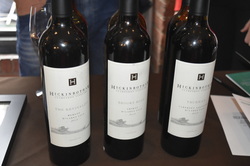 Shiraz was one of the original varieties brought to Australia. It is grown in just about every region. With varying climates, the styles vary as well. The cooler climates generally tend to produce medium-bodied wines that are spicy, while warmer climates produce more full-bodied, richer Shiraz. Each region brings it’s own unique style to the wine. The Hickinbotham Clarendon Vineyard Brooks Road Shiraz 2013, from McClaren Vale, SA is 100% Shiraz. Deep purple in color, it was rich with dark berry flavors and spice. Firm tannins and a peppery finish made this medium-bodied Shiraz a standout. Heading north, I tasted Tyrell’s Wine Vat 9 Shiraz 2013, Hunter Valley, NSW. This Shiraz was very dark red with more herb and floral on the nose. Lots of berries with fennel, floral and a little earth mixed in. Gentle tannins added to a lengthy finish. Since Cabernet Sauvignon does not grow well with heat stress and drought, Coonawarra and Margaret River have developed the best reputation for growing Cabernet Sauvignon in Australia. However, there are other regions such as Langhorne Creek, McLaren Vale and Barossa in South Australia that also produce noteworthy Cabernet. At the tasting last week, I found most of the Cabernets to be “chewy” but very drinkable. Yalumba The Menzies Cabernet Sauvignon 2012 from Coonawarra was deep garnet with berry, plum and herbs on the nose. The palate was alive with fruit, oak and savory herbs. Tannins were high with more fruit on the finish. Pinot Noir grows best in Australian regions with cooling influences of the ocean or altitude. The state of Victoria produces a wide range of styles as does Yarra Valley, Mornington Peninsula and Macedon Ranges. Tasmania is surrounded by the cooling effect of the Southern Ocean and does well with this particular variety of grape. One of the Pinot’s I tasted was Giant Steps Yarra Valley, 2015 from Victoria. Floral and cherry were on the nose. Silky red fruits, spice and pepper greeted the palate with medium tannins and a hint of herbs on the finish. I have touched on just a few of the varieties of wine that Australia has to offer, so I suggest that the next time you’re in a wine store or out to dinner, try a bottle of Australian wine. You won’t be disappointed! Have a great Wednesday!
Cheers, Penina 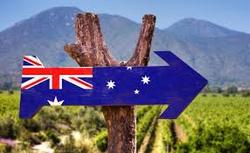 All my “wine” friends are talking about Australian wines. The Australians recently came to town and wowed us. After spending the beginning of the week at a seminar and tasting these magical wines, I’m ready to dive in and start sharing some of my thoughts. I was very impressed with the Chardonnays. I had the opportunity to taste these lovely wines from different parts of Australia. They all had a unique style and range of flavors. Hunter Valley, one of Australia’s best-known wine regions is located north of Sidney in the New South Wales region. It is home to some of the oldest vineyards in the world and was spared from the phylloxera epidemic that wiped out vineyards of Europe in the 19th Century. It is in this “sacred site” that some of Tyrrell Wines premium vineyards are located. The vines (Chardonnay, Semillion and Shiraz) are over 100 years old and still produce and grow on their own roots. I tasted Tyrrell’s Vot 47 Chardonnay 2010 that came from Hunter Valley, NSW. The wine was creamy with soft citrus, peach, hints of vanilla and oak with nice acidity, length and balance. I had the pleasure of meeting with Bruce Tyrrell, 4th generation and managing director. He chose some outstanding Shiraz for me to taste (which I will reflect on in another post.) 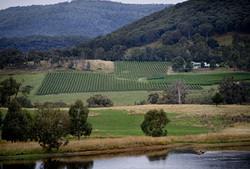 Another impressive Chardonnay came from Eden Road Wines located in Tumbarumba, NSW. Eden Road is a boutique wine company and fairly young but is producing award-winning wines. I was bowled over by their 2013 Chardonnay. Aged in 15% new oak, the aromas were heady with citrus and fruit. The palate offered creamy peach, nectarine and a hint of hazelnut. Nicely layered and a stunning finish. 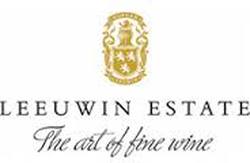 The Leeuwin Estate is located in Margaret River, WA. The Winery is one of five founding wineries in the Margaret River district in Western Australia. It is family owned and they have given themselves quite a name for combining fine wine, food, art and music. Now that’s what I like, all my favorites under one roof. They have an award winning restaurant, art gallery and concert arena. Their Art Series Chardonnay 2012 was extremely good. The “Art Series” represents Leeuwin’s most opulent and age worthy wines. The aromas were heady with floral, caramel and oak. Aged in 100% new oak, this wine was unbelievably rich in texture, with fruit, citrus and hints of oak and nuts on the palate. The finish was seductively long. It was a “wow”! All the whites that I tasted at this event were focused and consistent with ripe fruit. Australian Chardonnays have certainly broadened my palate! More to come…
Happy Wednesday! Cheers! Penina 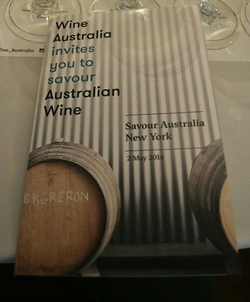 On Monday I found myself seated in the banquet room of the popular Tribeca Grill in NYC. Owned by Robert Di Nero and Lou Diamond Phillips, among others, this trendy establishment opened its door in 1990 and is still going strong. However, I wasn’t there to dine. I came for the Savour Australian Roadshow, a highly anticipated event for media and trade that included a seminar and walk around wine tasting of Australian wine. 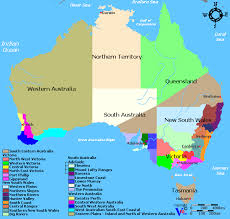 Australia, a single country continent, is the smallest of the seven continents but it is the sixth largest country by total area. Australia is also the flattest continent with a land mass almost equal to that of the United States and much larger than Europe. Australia is broken down into six states. Wine is produced in every state with more than 60 designated wine regions and over 2000 wineries. Temperatures and soil vary not only from region to region, but within the regions as well. The diverse climates and terrain in these unique wine regions are reflected in the wines. There are no grapes indigenous to Australia. The first vines arrived in 1788 and vineyards were established in 1805. James Busby, regarded as the “father” of the Australian wine industry, went to Europe in 1831 and collected 650 varieties of which 362 survived the journey. They were planted in the Botanical Gardens in Sydney and a duplicate collection was planted in Busby’s Hunter Valley property. Over time, cuttings made their way to other regions, establishing the “old vines” of which many can be traced to the original Busby collection. With over 130 grape varieties, the major wines that are produced in Australia are Shiraz, Cabernet Sauvignon, Pinot Noir, Grenache, Merlot, Chardonnay, Riesling, Semillon, Muscat and Sauvignon Blanc. Mark Davidson, Global Education Manager, moderated the seminar “Old Vines & Classic Wines of Australia” along with an impressive panel of winery principles, Charlie Seppelt, Chester Osborne, Bruce Tyrrell and Allister Ashmead. Fifteen glasses of wine were set before each of us to taste and compare. We tasted Marsanne, Chardonnay, Grenache, Cabernet Sauvignon and Shiraz ranging in style, vintage and region. As we sipped the wines, we were educated on the regions, terrain, various production techniques, some family history and a few humorous stories. I enjoyed listening to the panelists who were so dedicated and passionate about wine. In fact, every winemaker and owner that I met yesterday had a story to tell, whether it was about their family, the region, wine production or how they hand picked the grapes. The room was pulsating with enthusiasm! Many different winemakers and regions were represented at the walk around tasting, including Hickinbotham Wines, Tyrrell’s Wines, Brokenwood Wines, d’Arenberg, Elderton Wines, Leeuwin Estate and Kaesler Wines. Over the next few weeks I’ll review some of these extraordinary wines and share a little history about the vineyards they come from. I must confess that when I hear an Australian accent, especially when it’s emanating from a handsome Australian man, my heart tends to melt. However, it was the Australian wines that stole my heart yesterday!
Happy Tuesday! Cheers! Penina This past weekend was all about friends, food and drink. I came across a quote recently that made a lot of sense. “Don’t let anyone rent space in your head, unless they’re a good tenant.” And that’s what it’s all about…surrounding oneself with positive people that are optimistic, joyful and trustworthy. I’ll drink to that! And speaking of drink…Six months ago I wrote a review about Shingleback’s 2011 The Gate Shiraz that is produced in the McLaren Vale area of South Australia. It was an amazing wine and I promised myself that I would keep the other bottles under wrap for a few years. But I couldn’t help myself and opened another bottle last evening. As before, the aromas of lush fruit and spice were heavenly. Cherry and candy apple dominated. In my last review, I said: “The palate was a feast of layers, oozing dark jams, cherry, oak, pepper, spices and a hint of vanilla. Silky tannins and a solid backbone gave way to a long finish.” In addition, this time the wine had a hint of marzipan that teased the palate. This full-bodied wine paired well with the meal and dessert! http://www.shingleback.com.au I served baked salmon and cherry tomatoes with a wine, shallot & mustard sauce accompanied by asparagus and mushrooms sautéed in olive oil and shallots. I also made my famous mashed potatoes. The dessert was Molten chocolate cake. Click on each image for a closer look. The evening segued into watching a silly but funny movie and sipping the last of the wine. Perfect!
Have a great Monday! Cheers! Penina  Yesterday was a laid back kind of Sunday with the NY Sunday Times and the Jets vs. Giants game on the television. It was a wild game with the Jets scoring a touchdown in the last 27 seconds to tie the game. The Jets won 23 to 20 in overtime. I was rooting for the Giants…oh well. 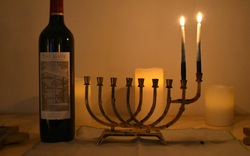 Since it was the first night of Hanukkah, I wanted to be festive so I opened a bottle of Shingleback’s 2011 The Gate Shiraz. I reviewed this wine in June and had every intention of saving the last few bottles to open over the course of several years. However, I couldn’t resist opening another bottle last night! My review is the same as it was in June. “The wine is produced in the McLaren Vale area of South Australia. It scored high points in the 90’s and has won many awards. This full-bodied wine was deep purple with aromas of dark fruit, oak and spices. The palate was a feast of layers, oozing dark jams, cherry, oak, pepper, spices and a hint of vanilla. Silky tannins and a solid backbone gave way to a long finish.” This is an excellent wine with lots of character. I hope I have enough self-control to keep the other bottles under wrap! http://www.shingleback.com 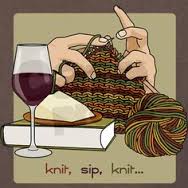 I have a crazy week ahead, but I’ll be back very soon! Cheers! Penina 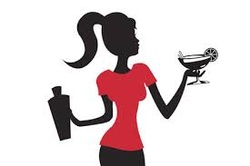 The past few days have been extremely busy and quite productive. So, I was grateful to spend a few low-key evenings relaxing with friends. I need to get caught up, so let me back track a few days.  An early evening swim on Sunday was followed by dinner with a friend. The “supermoon” was still full and magnificent as we dined al fresco on lobster salad and a bottle of 2010 Brokenwood Semillon from Hunter Valley, Australia. When one thinks of Semillon, we usually associate it with France because it is the major white grape in the Bordeaux region and the 3rd most planted grape in France. However, it has taken a stronghold in many other parts of the world including Australia. Semillon has been compared to Sauvignon Blanc and Chardonnay, depending on where it is grown. 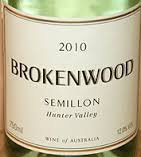 The Brokenwood Semillon we tasted was an interesting color of pale straw with a green hue. It had wonderful aromas of citrus, green apple and honeydew. On the palate there was an initial sweetness that segued into green apples, lime and a hint of pear. The wine was full of character with a long crisp finish and reminiscent of Sauvignon Blanc. http://www.brokenwood.com.au When I have more time, I’ll discuss the major role that Semillon plays in the world of Sauternes, especially my favorite Château d'Yquem!
Tomorrow’s post will be about an incredible 1988 vintage wine I had last night. Happy Wednesday! Cheers! Penina  The sun is shining and I have many things to do today. But before I run out the door, I want to tell you about the wine I tasted last night. 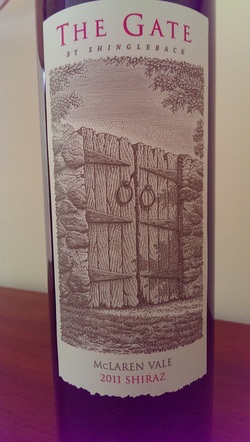 I wanted to open something hearty and special for my “300th” post. So I chose Shingleback’s 2011 The Gate Shiraz. The wine is produced in the McLaren Vale area of South Australia. It scored high points in the 90’s and has won many awards. I can understand why! The moment it was opened, I knew we were in for a treat. This full-bodied wine was deep purple with aromas of dark fruit, oak and spices. The palate was a feast of layers, oozing dark jams, cherry, oak, pepper, spices and a hint of vanilla. Silky tannins and a solid backbone gave way to a long finish. http://www.shingleback.com.au I have five more bottles that I will savor over the next 10 years or so! Have a great Tuesday!
Cheers! Penina  Before I become immersed in the evening festivities, I wanted to share a little of what Santa Claus gave me this year…traditional and unusual. A few of the gifts were a bottle of 2010 Amarone Tommasi, decadent chocolates, a lovely pair of earrings and a lamp made out of a wine bottle. 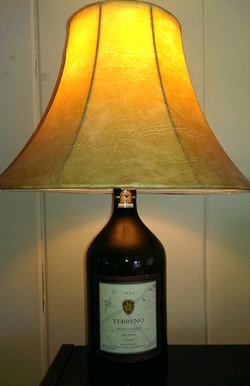 The Amarone is in my wine rack waiting for a special occasion. I’m wearing the earrings and the lamp is in my living room. My friend made the lamp using his own bottle and a lamp kit purchased at a hardware store. However, for all you wine lovers looking for something ready made, wine bottle lamps can be purchased at many online stores, including two shops on Etsy.com called KristinzKustomz and BranchingOut TLC 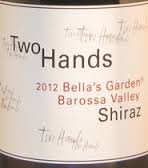 Speaking of wine…. I had a spectacular wine last evening. It was a 2012 Two Hands Shiraz Bella’s Garden Barossa Valley. This Australian wine was perfect in every way. Dark garnet in color, it had dark berry preserves, spice and cassis on the nose. It was full-bodied with the flavor of cherry, plum, dark chocolate, licorice and spice. Soft tannins and a lengthy finish gave this wine a hearty cheer from all! http://www.twohandswines.com Cheers!
Penina |
Categories
All
|

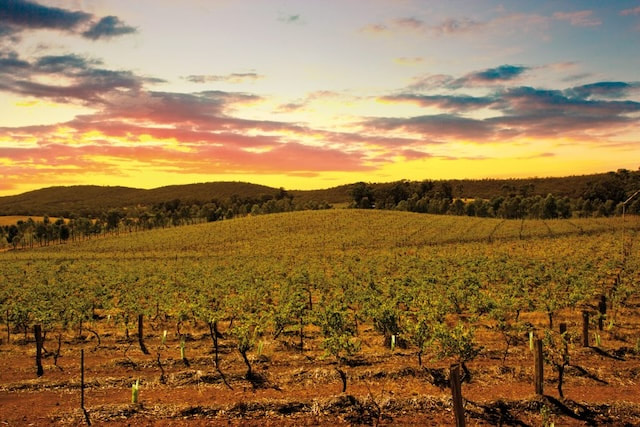
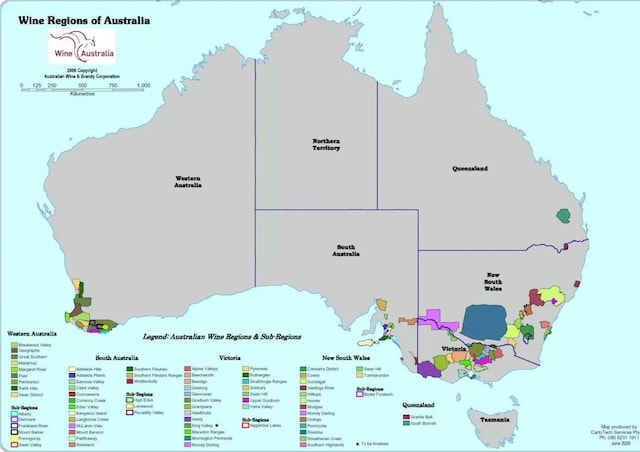
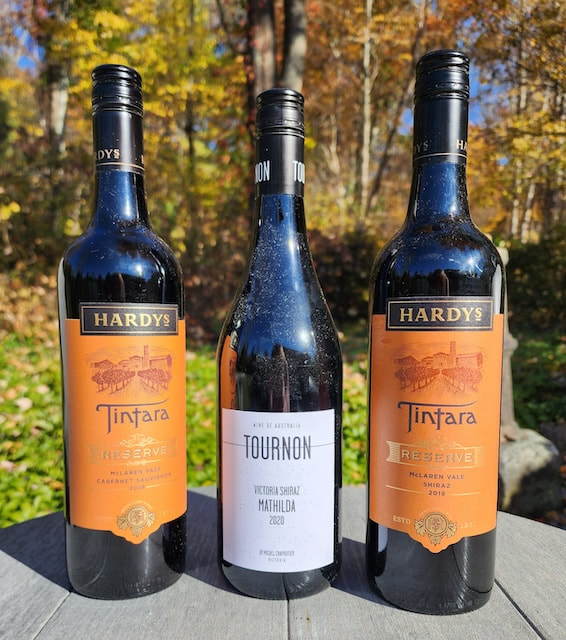
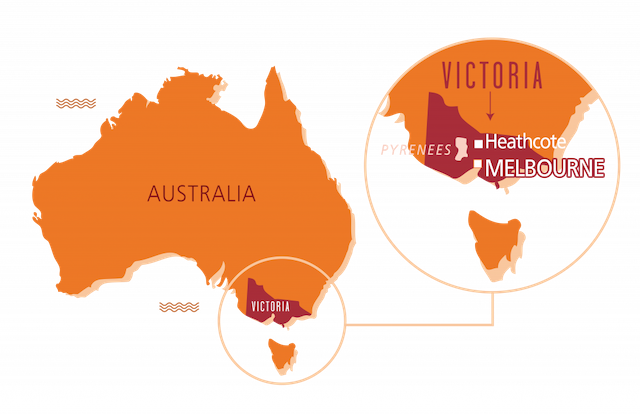
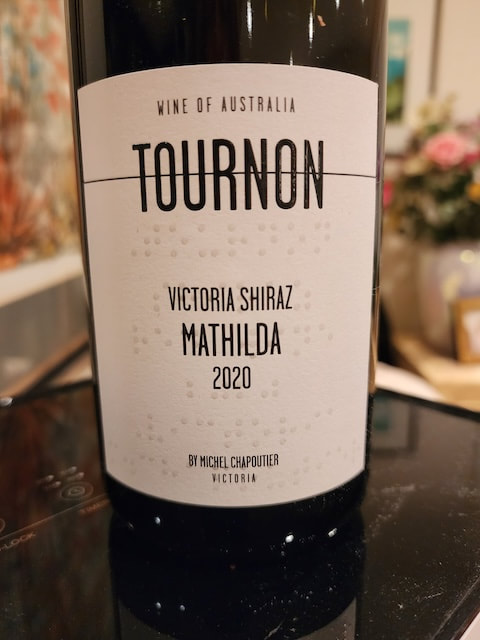
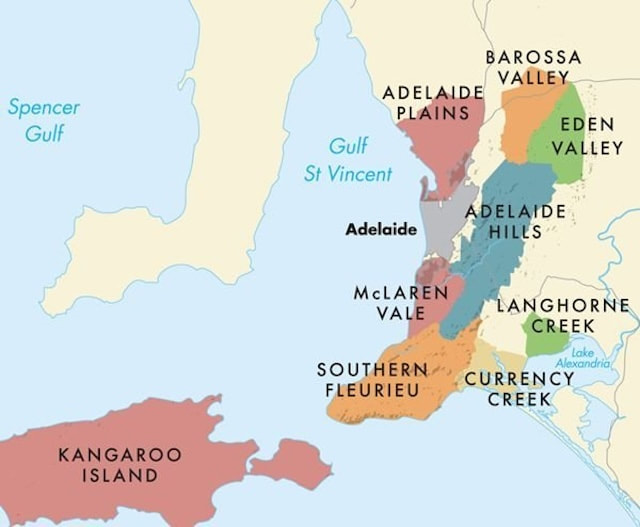
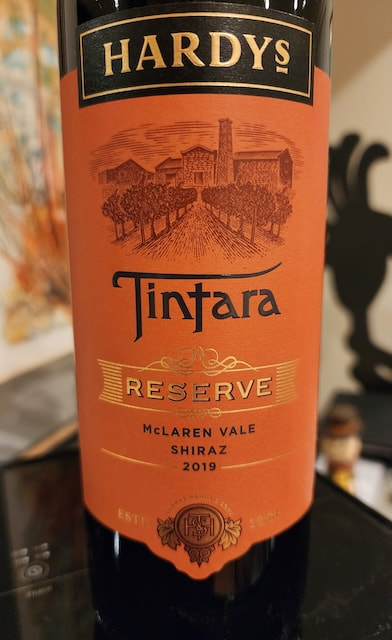
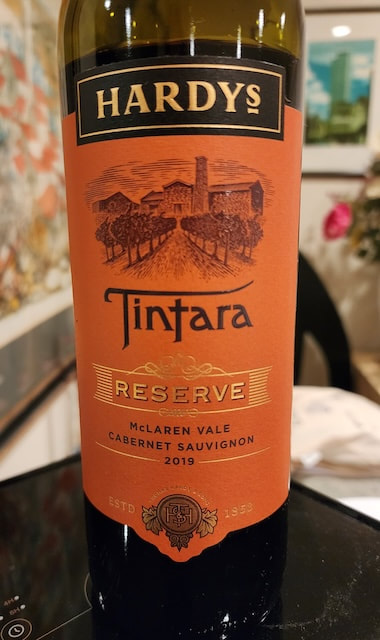
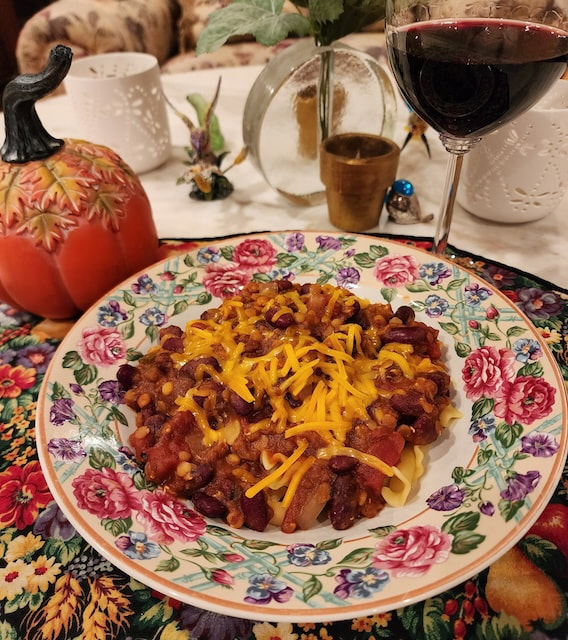
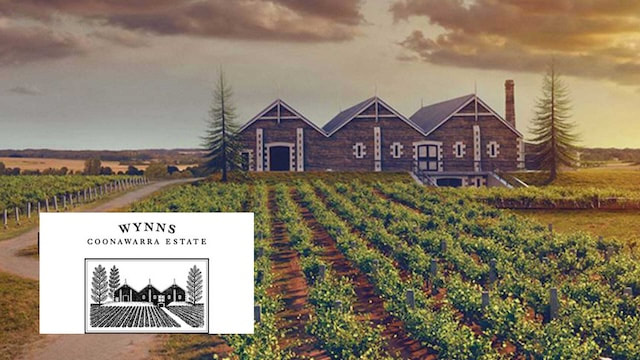
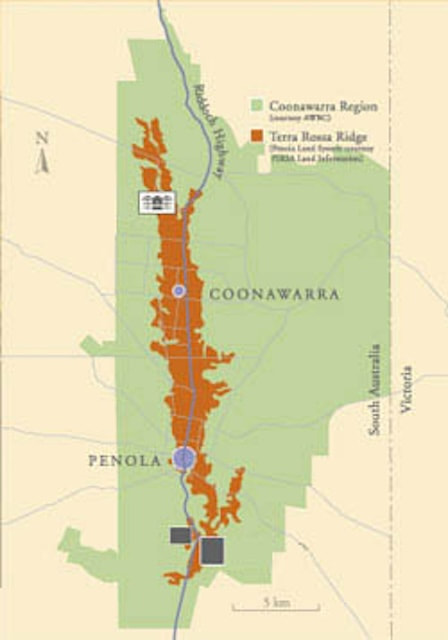
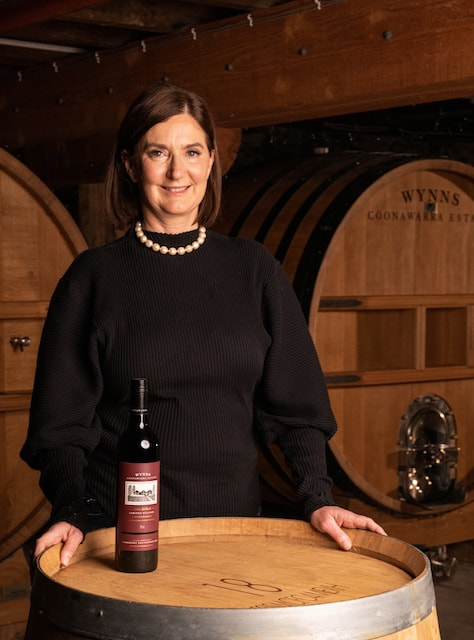
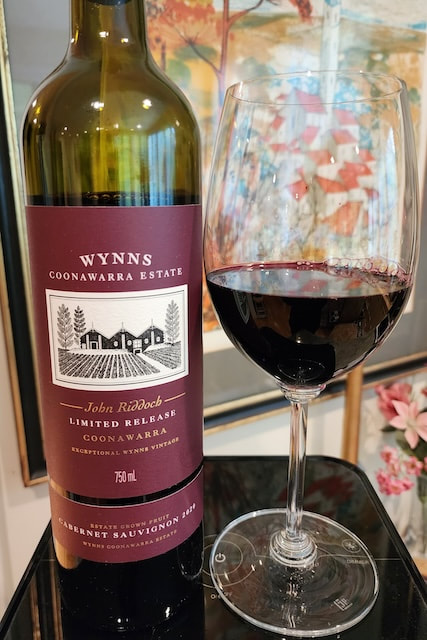
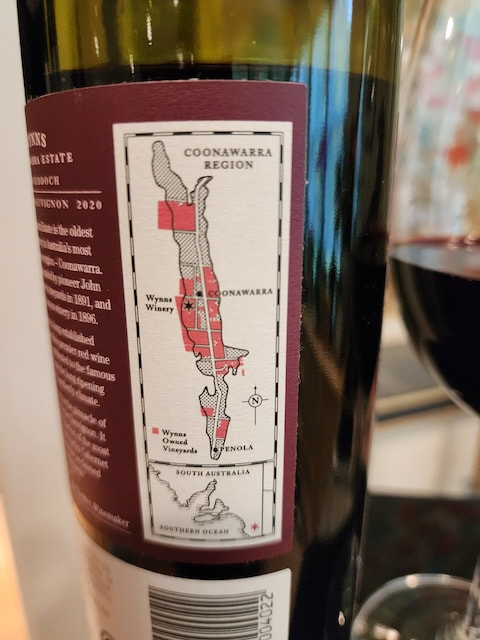
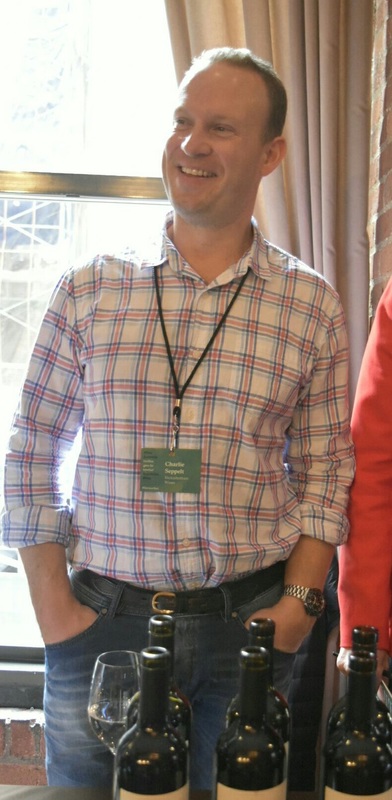
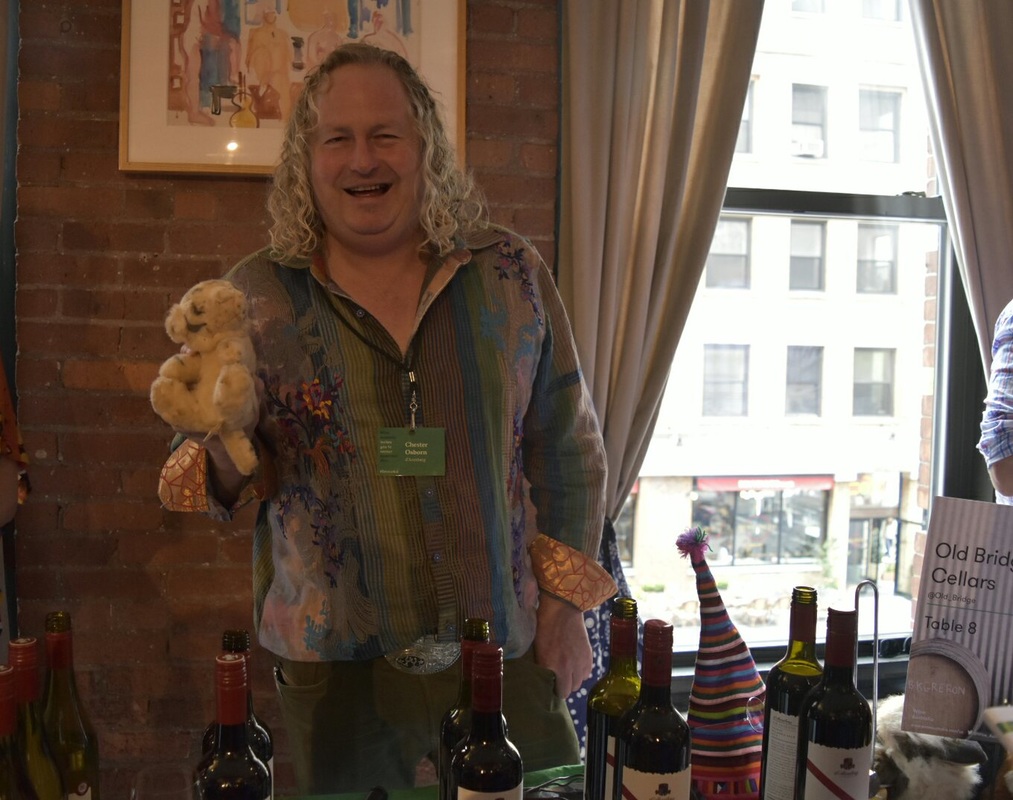
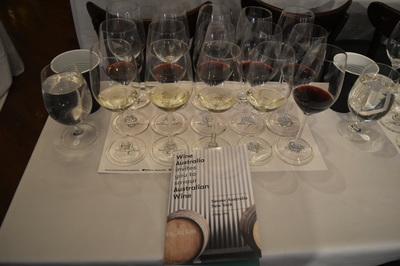
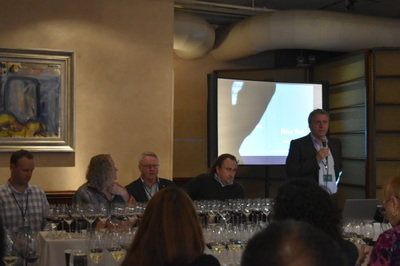

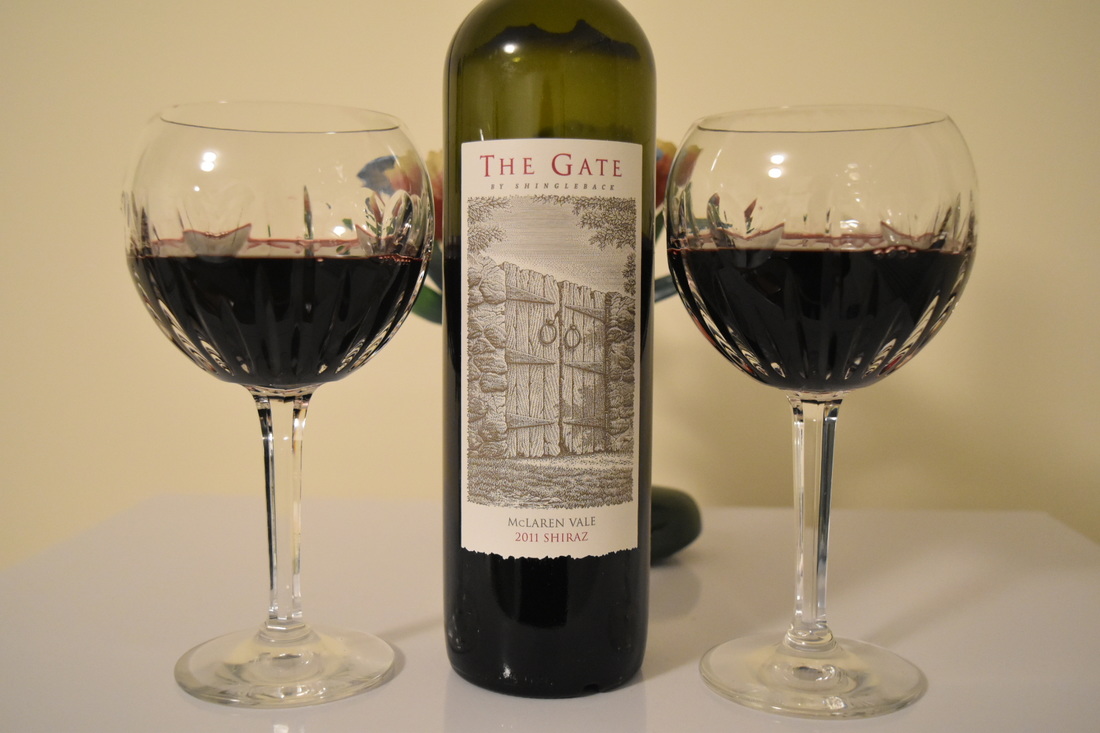
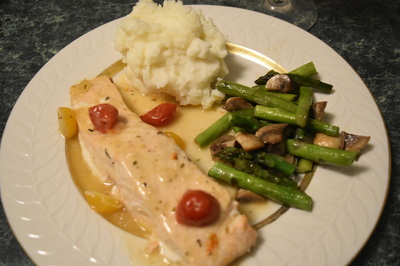
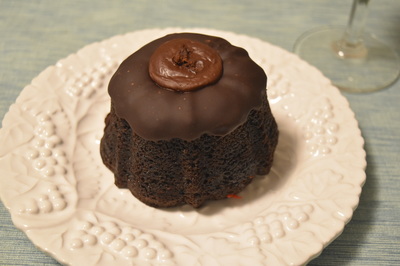
 RSS Feed
RSS Feed